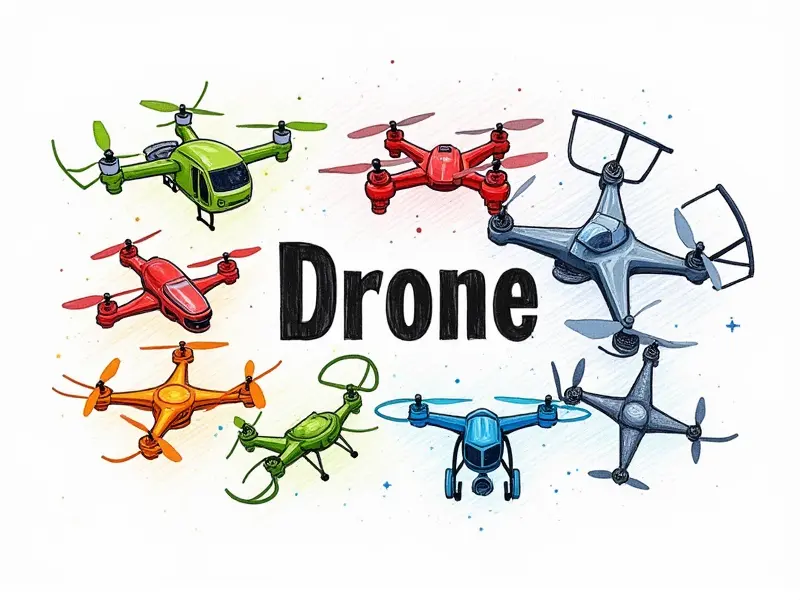Can drones fly indoors w/o GPS?

Flying Drones Inside: No GPS Needed
Indoor drone flight has become increasingly popular among hobbyists and professionals alike. Whether you're interested in FPV racing, aerial photography, or simply exploring the capabilities of your drone without external aids like GPS, this article will guide you through the intricacies of indoor drone navigation.
Indoor Drone Flight Without External Aids
Flying drones indoors presents unique challenges and opportunities. Unlike outdoor flights where GPS provides precise location data, indoor environments lack such assistance. However, modern drones are equipped with advanced sensors and algorithms that enable them to navigate effectively without relying on external aids.
Can FPV Racing Drones Fly Inside No GPS?
First-person view (FPV) racing drones are designed for high-speed maneuverability and agility. These drones can indeed fly indoors without GPS, thanks to their sophisticated onboard sensors like ultrasonic rangefinders, optical flow cameras, and inertial measurement units (IMUs).
Navigating Indoors With Your Drone
Indoor navigation requires a different set of skills and techniques compared to outdoor flying. Here are some essential tips for mastering indoor drone flight:
- Understanding Sensor Technology: Familiarize yourself with the sensors on your drone, such as ultrasonic rangefinders and optical flow cameras.
- Setting Up Obstacle Avoidance: Configure your drone's obstacle avoidance settings to ensure safe flight paths in tight spaces.
- Practice Hovering Techniques: Master the art of hovering in place, which is crucial for indoor navigation and stability.
How Do Drones Fly Indoors Without GPS?
Drones use a combination of sensors to navigate indoors. Here’s how it works:
- Inertial Measurement Units (IMUs): IMUs track the drone's acceleration and rotation, providing data on its movement.
- Optical Flow Cameras: These cameras analyze visual patterns to estimate distance from surfaces and maintain altitude.
- Ultrasonic Rangefinders: Ultrasonic sensors measure distances by emitting sound waves and detecting their reflections, helping the drone avoid obstacles.
Indoor Drone Navigation Tips For Beginners
If you're new to indoor drone flying, here are some tips to get started:
- Choose a Suitable Indoor Space: Look for large open areas with minimal obstructions.
- Start Slowly: Begin by practicing basic maneuvers before attempting more complex flights.
- Use Simulation Software: Many drone manufacturers offer simulation software that can help you practice indoor flight techniques safely.
Mastering Indoor Drone Flight Techniques
To become proficient at indoor drone flying, focus on these key techniques:
- Straight Line Flying: Practice maintaining a straight path while avoiding obstacles.
- Circle Flights: Learn to fly in circles and figure eights to enhance your maneuverability skills.
- Holding Position: Perfect the skill of holding your drone steady at a specific point without drifting.
Flying Drones Indoors: GPS Not Required
The absence of GPS indoors doesn’t hinder your ability to fly drones effectively. Instead, it encourages reliance on other sensors and manual control skills. This makes indoor flying an excellent way to improve your drone piloting abilities.
FPV Racing In The Great Indoors: Tips
For FPV racers looking to take their skills indoors:
- Select the Right Gear: Choose drones with robust obstacle avoidance systems and high-resolution cameras for clear visuals.
- Create a Safe Flight Zone: Ensure your indoor space is free of fragile items or large obstacles that could cause damage during races.
- Practice Regularly: Consistent practice is key to mastering the nuances of indoor FPV racing.
Drone Navigation Tricks For Indoor Use
Here are some advanced navigation tricks for indoor drone flying:
- Leverage Visual Markers: Use visual markers or patterns to help your drone maintain orientation and stability.
- Optimize Sensor Settings: Fine-tune the settings of your drone’s sensors for optimal performance in indoor environments.
- Experiment with Different Environments: Try flying in various indoor spaces to adapt your techniques to different conditions.
Indoor Drone Operation Without GPS Aid
Operating drones indoors without GPS is a rewarding experience that enhances your piloting skills and expands the creative possibilities of drone use. By understanding the technology behind indoor navigation and practicing regularly, you can become proficient in this exciting field.
Conclusion
Flying drones indoors without GPS presents unique challenges but also offers immense opportunities for skill development and creativity. Whether you're an FPV racer or a casual hobbyist, mastering indoor drone flight techniques will elevate your flying experience to new heights. Embrace the technology available today and enjoy the thrill of navigating complex indoor environments with precision and confidence.

